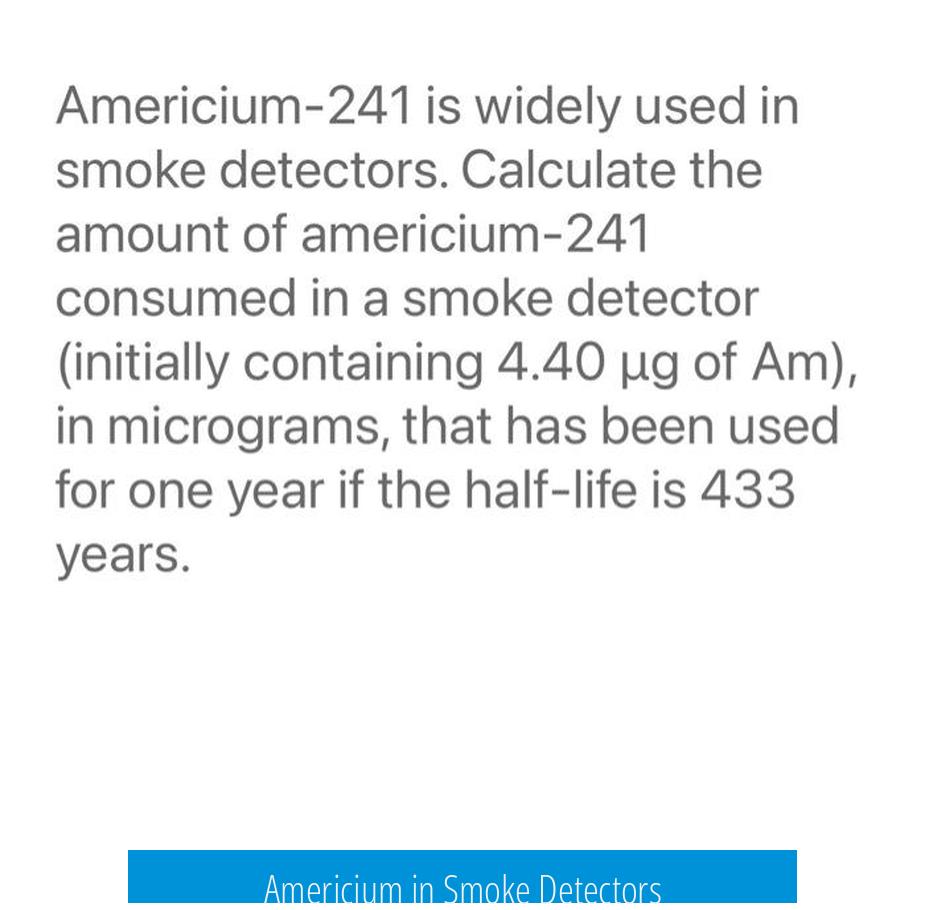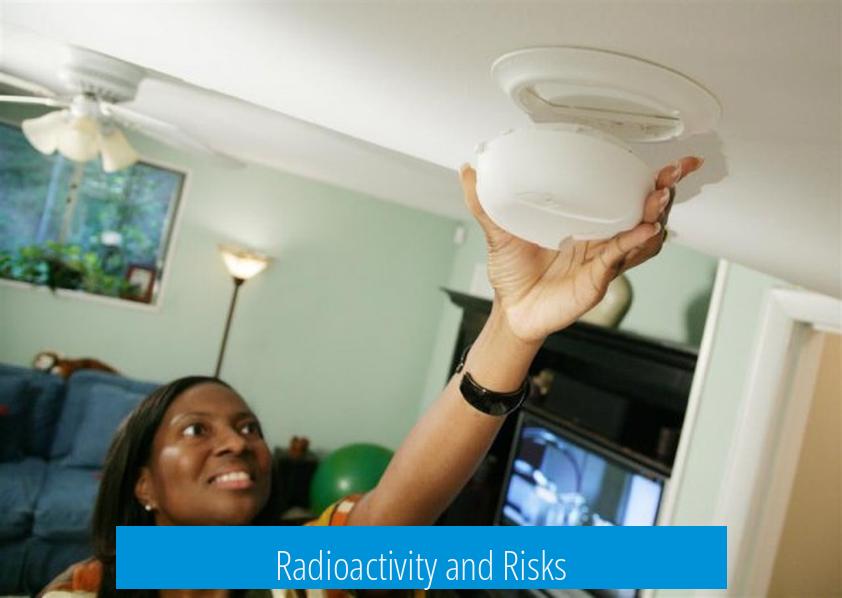Americium in Smoke Detectors

Americium-241 (Am-241) in smoke detectors is a radioactive source safely sealed inside the device, primarily emitting alpha particles with minor gamma radiation, posing minimal danger when contained properly. Its design and containment ensure safe daily use, but handling precautions are important if removed.
Physical Nature and Containment
Am-241 is typically electroplated as an almost invisible spot onto a metal substrate. This radioactive source is then securely covered by a thin gold layer, which prevents the spread of radioactive material and keeps the americium stable within the smoke detector.
The alpha particles emitted have a very short range, only a few millimeters in air, while the gamma radiation is low intensity but can travel farther. This containment limits any significant external exposure.
Radioactivity and Risks

- Am-241 emits alpha and gamma radiation, but the external risk is minimal when enclosed.
- Exposure from the source inside a detector equates roughly to minor annual environmental gamma exposure if briefly handled.
- The main risk occurs if the americium is ingested or inhaled, making dust or direct contact hazardous.
Leaving americium in its original capsule in the detector is safe. Direct handling requires caution, especially avoiding ingestion or creating dust.
Safety Precautions and Handling
- Wear gloves when handling the americium source to prevent contamination.
- Avoid disturbing the source surface to prevent dust generation.
- Store the americium in a metal tin, away from children or frequent contact.
- Wash hands thoroughly after any contact with the device or source.
Using personal protective equipment (PPE) is advisable when working with or experimenting on americium sources.
Legal and Ethical Considerations
Removing the americium from its shielding in smoke detectors is illegal in many jurisdictions, including the U.S. Handling or liberating nuclear materials without authorization constitutes a criminal offense.
Practical Applications and Demonstrations
Americium’s radiation enables educational demonstrations, such as testing shielding materials using a Geiger counter sensitive to alpha particles. These setups reveal how thin layers of aluminum foil can block emitted radiation effectively.
Such experiments have practical uses in understanding radiation safety and detection.
Key Takeaways
- Americium-241 is safely sealed inside smoke detectors with minimal external risk.
- Alpha radiation has a very short range; gamma radiation is weak but detectable.
- Handling americium requires gloves, proper storage, and hygiene to prevent ingestion or inhalation.
- Removing shielding or unauthorized handling is illegal and unsafe.
- Americium aids educational demonstrations on radiation and shielding principles.
What form does americium take inside a smoke detector?
Americium is in a tiny spot, electroplated onto a metal layer. It’s sealed with a thin layer of gold to keep it contained and safe.
Is it dangerous to handle the americium inside smoke detectors?
It’s mostly safe if left inside the detector. Handling requires gloves and care to avoid dust. Don’t ingest it, and wash hands after contact.
How far can the radiation from americium spread?
Alpha particles travel only a few millimeters in air. Gamma rays can travel further but are relatively soft in intensity from this source.
Are there legal risks in removing americium from smoke detectors?
In the US, removing americium from its shield is illegal. Handling nuclear material without authorization can lead to criminal charges.
Can americium be used for educational purposes?
Yes, it’s used to demonstrate radiation shielding. A Geiger counter can detect its alpha particles through a mica window, making it useful in labs.





Leave a Comment